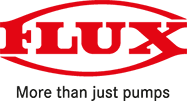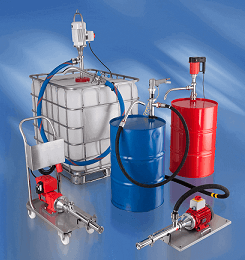Flux Pumps Overview
Flux Pumps have been established for over 60 years and were the original inventor of the drum pump. 
All pumps and motors are manufactured in Germany and have been designed in various forms to assist customers in decanting containers with whatever it should contain from tomato puree to strong acids, oils or grease.
Each model of Flux pump has been meticulously designed for a specific purpose such as:
Conveying
Emptying
Dispensing
Batching
For all fluid types, and zones such as Atex. Pumps can be seal less, or mechanically sealed. Units are designed to ensure processes are more efficient, safer and reliable.
Flux barrel pumps can be used to transfer, extract or mix almost any fluid out of a drum, IBC and other smaller containers, these units can be supplied in various plastic and metal construction materials, the most common are PP (Polypropylene), PVDF (Polyvinylidene fluoride), Aluminium and Stainless steel, there is also a variety of seal types and materials meaning there is a suitable pump for almost any liquid/chemical.
There are a wide variety of motors available to suit a vast range of barrel pumps, the most common being commutator electric motors, brushless electric motors, air operated motors, and high capacity 3-phase motors, mainly used for Flux eccentric worm-drive high viscosity pumps.
The two main Flux pump types are Centrifugal (impeller type) and Eccentric worm-drive, also known as progressive cavity pumps, depending on size and material configuration both types can be supplied for hygienic applications, hazardous chemicals and highly flammable liquids.
Centrifugal pumps are mainly used for thinner, low viscosity chemicals whilst progressing cavity pumps are used for high viscosity products up to 30,000 mPas such as paints, glues and greases as a result they require a more powerful motor in order to handle viscous fluids.





